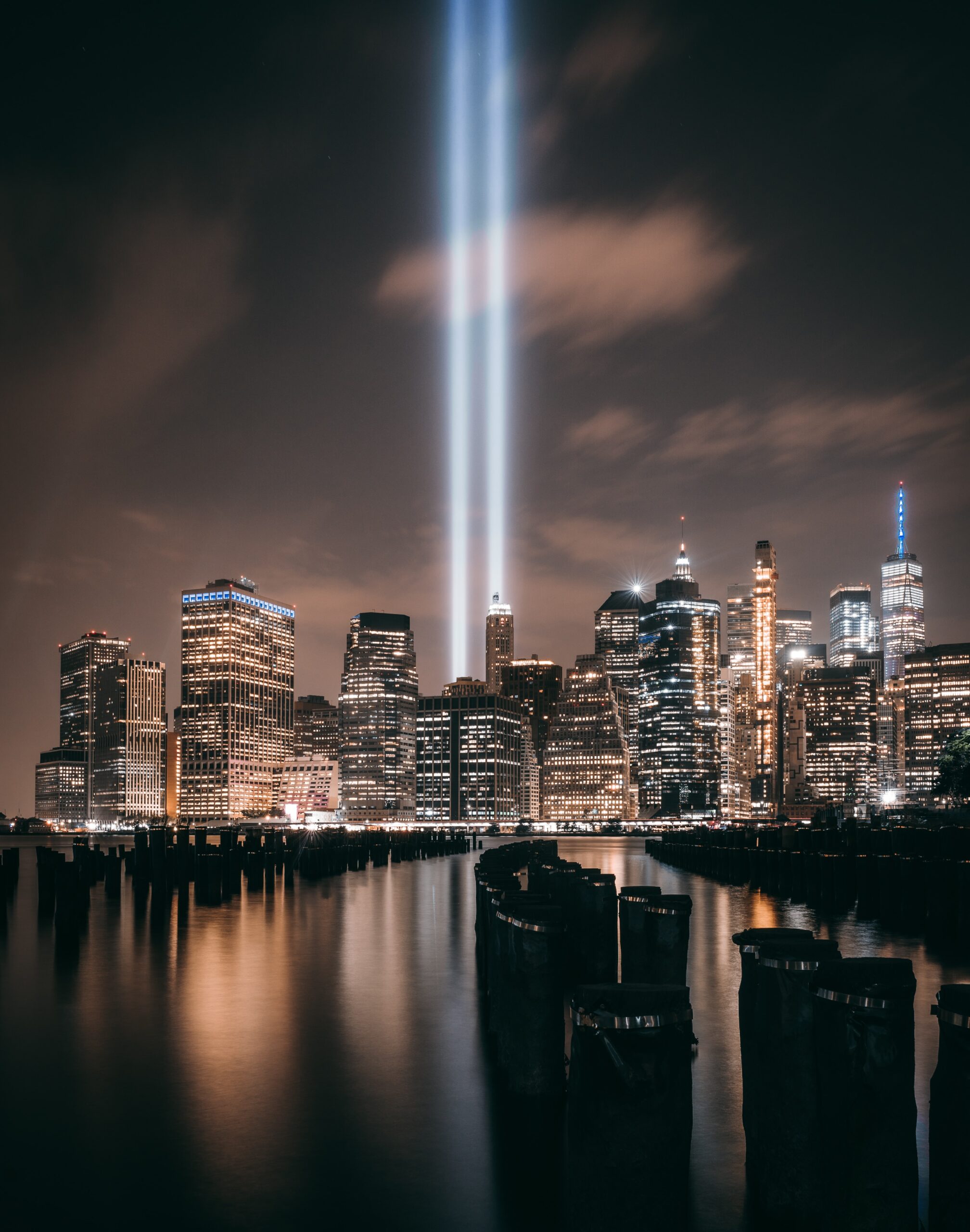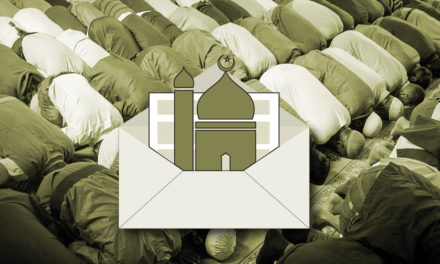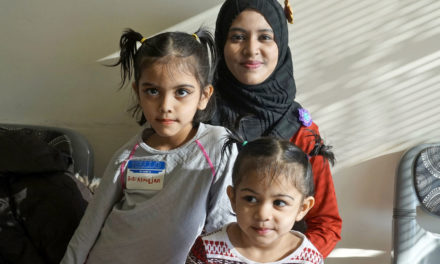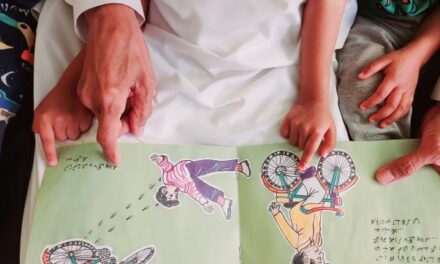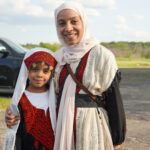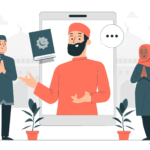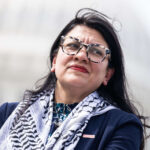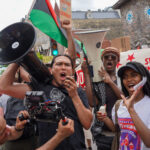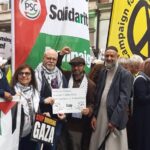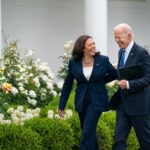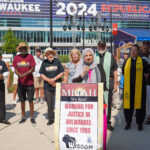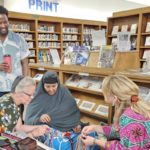By Louise Cainkar, Marquette University
With the twentieth anniversary of the September 11th attacks upon us, it is important to vigilantly recall that millions of Arab and Muslim Americans, who had nothing to do with those attacks, suffered enormous civil rights violations, physical attacks, job losses, verbal smears, and more, because of them — or rather because of how they were positioned by government and media in relation to them. I titled my book on their post 9/11 experiences “Homeland Insecurity” (Russell Sage Foundation Press, 2009) in recognition of this key aspect of the 9/11 national tragedy: although the US was their homeland too, Arabs and Muslims were treated not as members of an injured nation but as suspects in a massive plot to undermine it. The so-called UNITY of the nation in response to the attacks is thus a false narrative. It is false because believing in it requires excising part of our national body — those who other Americans waved their fingers at, erroneously blamed, steadfastly surveilled, and in some cases murdered — saying they don’t matter, disregarding how 9/11 affected them, and refusing to confront what their treatment says about us as a nation. The hostile actions of a significant proportion of Americans towards their Arab and Muslim neighbors, co-workers, and passersby were not simply impulsive behaviors driven by hate or fear; they were encouraged by messages from our government and media, who leveraged an already in place simplistic, criminalizing, and racialized “us and them” narrative to justify the actions that took place following the attacks. Those actions included not only mass arrests, deportations, and severe civil rights abuses of Arab and Muslim Americans but also the invasion and occupation of Iraq (which also had nothing to do with 9/11), from which millions of innocent persons died. Afghanistan is a slightly more complex story, but there too millions of innocents suffered for the acts of a few. While the U.S. military, its contractors, and weapons makers benefited from the $1 trillion in U.S. taxpayer money spent in Afghanistan over the past 20 years, studies show that just 2% (or less) was spent on improving the lives of the Afghan people, including Afghani women, in the form of schools, health care, poverty reduction, community building, and other basic services. In sum, no meaningful contributions were made to advance the human rights of Afghanis to thrive and live with dignity because “us versus them” ideas and practices guided US policies.
The idea that the domestic War on Terror began after 9/11 is also a false narrative. Believing it demands acceptance of a simple cause and effect story: the 9/11 attacks occurred and only after that, suddenly, millions of Americans who shared an ethnicity or religion became suspects. That’s like saying that Japanese internment was solely due to the Pearl Harbor attacks and had nothing to do with prior history, in particular with pre-existing anti-Japanese and anti-Asian racism. We know that when entire groups are held responsible for the acts of a few, racism is lurking in the wings. So too, a more complex rendering of the War on Terror better explains the post 9/11 imputation of collective guilt on all Arabs and Muslims. The War on Terror actually began decades prior to 9/11 — despite their being not a single incidence of domestic Arab or Muslim terrorism; it was a racial project from the start because it utilized damaging stereotypes to garner its legitimacy. It deployed racial logics in a nation where the idea of innate racial dispositions made sense. From the late 1960’s through the end of the 20th century, Arabs and Muslims were characterized in the mainstream US media, in school textbooks, in cartoons, and in films, just about everywhere, as persons who held values different from “us,” people who were collectively backwards, barbaric, and prone to violence. Throughout the latter decades of the 20th century it was nearly impossible to find any other characteristic associated with them, except for the gendered variant: oppressed women. Voices in protest of these simplistic and negative portrayals were systematically silenced by a range of interested parties, including in academia.
Working in tandem with this socially constructed racialized narrative were methods of control, something critical to all racial projects because they stifle dissent, reduce freedom of movement, and hinder solidarity. The historical record of this pre-9/11 era details numerous domestic surveillance schemes, deportation programs, bogus arrests, entry bans, financial monitoring operations, and political exclusion tactics targeting Arabs and Muslims in the U.S. For example, the Nixon era Operation Boulder program to “subvert” domestic Arab terrorism — even though there had been none — targeted Arabs studying in US universities who were engaged in free speech activities opposing US policies in their homelands; it resulted in the deportations of thousands of students. The Interagency Contingency Plan to detain “Alien Terrorists and other Undesirables” in a prison camp in Oakdale, Louisiana was a 1980’s multi-agency proposal crafted to manage alleged domestic terror threats; thankfully it was not implemented. However, many view the 1987 sensationalized arrests of the “LA 8” — pro-Palestinian civic activists arrested on phony charges of terrorism — as a test case to see how far the government could go in pre-emptive detentions, a step called for in the Contingency Plan. Candidates for political office were actively encouraged to return donations from Arab and Muslim Americans and publicly state that they had done so because they don’t take money from terrorists. Civil rights coalitions were discouraged from admitting Arab American organizations, under the pretext that they represented terrorists. These and other pre-9/11 “terror prevention” programs were largely unknown to most Americans, but when exposed could count on in their defense both the saturated images of Arabs and Muslims as innately prone to terrorism and the shortage of allies.
With this history of stereotyping, defamation, silencing, and repression in place it was easy, appearing as “common sense” to most Americans, that millions of Arab and Muslim Americans should be treated as suspects in the 9/11 attacks. At the time, Attorney General John Ashcroft said in a speech to US mayors:
The attacks of September 11 were acts of terrorism against America orchestrated and carried out by individuals living within our borders. Today’s terrorists enjoy the benefits of our free society even as they commit themselves to our destruction. They live in our communities — plotting, planning and waiting to kill Americans again. …
The notion that Arab and Muslim terrorists were hiding throughout American communities just waiting to attack, living undercover lives that had public veneers of normalcy, provoked fear in the hearts of Americans. Government statements were clear in their directives. Attorney General Ashcroft told the American people: “The federal government cannot fight this reign of terror alone. Every American must help us defend our nation against this enemy”. Americans were told to closely observe Arabs and Muslims and consider their seemingly normal activities as suspect. And they did. Within one week of the attacks the Department of Justice received 96,000 anonymous tips identifying potential terrorists, often neighbors or co-workers, each of which was followed up by an intrusive FBI interrogation. Within a month of the attacks over 1000 persons were being held in detention. Over time, the US government rolled out more than 20 national security policies aimed specifically at Arabs and Muslims in the US. In addition to arrests, preventive detentions, deportations, and FBI interrogations, were the registration and fingerprinting of more than 200,000 male foreign nationals, wiretapping, secret hearings, charity closures, and scrutiny of private Internet, telecommunication, and financial records secured through more than thirty thousand national security letters issued annually to American businesses after the passage of the USA PATRIOT Act. Public opinion polls showed overwhelming domestic popular support for these programs, including support for some strategies not implemented, such as requiring members of these groups to carry special identity cards. Georgetown law professor David Cole (Are We Safer? 2006, 17) described all of these activities as the “most aggressive national campaign of ethnic profiling since World War II”. (See Louise Cainkar. 2019. Homeland Insecurity: The Arab American and Muslim American Experience after 9/11. Russell Sage Foundation Press).
After years of invasive surveillance, interrogations, and baseless arrests that openly abrogated civil rights, no Arab or Muslim American terrorists were ever located. Let me repeat: the domestic War on Terror turned up no one complicit in the 9/11 attacks or plotting and planning another attack. Despite this, the security spotlight has not dimmed on Arabs and Muslims in the US, even though there continues to be no evidence that they collectively pose a threat to anyone. Indeed, white supremacists have long been a far more serious domestic terror threat than Arab and Muslim Americans, yet they have been spared the racialized status of collective threat, and the types of response that correspond to it, that is shared by persons inhabiting Black and brown bodies. National security responses to the January 6, 2021 siege of the US Capitol made this abundantly clear. Not only were there very few arrests, and limited uses of roadblocks, barriers, reinforcements, tear gas, and force, but the post facto search for culpable parties has insisted on evidence first and focused on specific individuals, not on spurious suspicions of entire groups.
Despite the facts, Arabs and Muslims continue to be used as a prop to represent the other, the enemy, in “us” and “them” narratives deployed by political actors and to be treated as a collective threat by security and defense establishments. Through today, a wide range of national security programs and systematic surveillance operations target their communities. For his part, Presidential Candidate Trump promised to enact a “total and complete shutdown of Muslims entering the United States” and made his best attempt to do so with the so-called “Muslim ban,” which restricted all migration to the US from specific Muslim majority countries based on an alleged “terror threat.” The Triangle Center on Terrorism and Homeland Security published data that showed otherwise. The Department of Homeland Security’s Countering Violent Extremism Program is a still active terror prevention program run through schools, social workers, sports clubs, and community organizations that focusses on Muslim youth, under the presumption that young Muslims are potential terrorists. (see Nicole Nguyen. 2019. Suspect Communities: Anti-Muslim Racism and the Domestic War on Terror. University of Minnesota Press).
REFLECTIONS FOR TEACHERS
On the 20th anniversary of the 9/11 attacks, it is incumbent on teachers to ensure that the entire 9/11 story is told. We honor those who perished on that day, pay tribute to the responders who risked their lives, and feel empathy for all persons directly affected by the attacks. Yet we must also reflect deeply on the UNITY story, on who is excluded from that narrative and on why the full story of 9/11 continues to be downplayed. This reflection should take us to the larger issues that are concealed by the UNITY story, the problem of racism, the problem that it is so easy it is to systematically cast entire groups as threats/the enemy and to convince others that this is the case. We might also reflect on a humanities big question: why is a UNITY story needed at all? What purpose did it and does it continue to serve?
Reflecting in a complex way on 9/11 helps us cultivate in our students a questioning mind; it helps us develop in them an innate sense that something is not quite right about simple stories. As human life is complex, there are very few simple stories. Furthermore, human societies are not only complex but hierarchical, meaning that some within them have more power to speak and to be heard than others. Our global order is also hierarchical; some lives seem to matter more than others. No matter in which discipline we teach, the existence of such inequalities means there are surely questions of voice, representation, and equity that we can teach our students to ask of the materials and human situations in front of them as they become women and men for others.
As a social scientist concerned with matters of race, I might ask students to reflect on the similarities and differences between the War on Drugs and the War on Terror. Or on how policing Arabs and Muslims is like and not like policing other communities of color. Concerning state policies, If the domestic War on Terror targeted Arabs and Muslims decades before 9/11, when the was no domestic terror, we might ask what purposes has it been serving? With the millions of lives lost in Iraq and Afghanistan, we might critically consider the notion of “prone to violence.” Social movement teachers might ask students to reflect on how active efforts to demonize, deny voice to, and quash solidarity with Arab and Muslim Americans before 9/11 contributed to their treatment after 9/11. How might post 9/11 national security efforts have been different if members of these groups weren’t so easy to “pick off?”? How might the public’s response to the state’s collective approach have been different? These questions about the power of solidarity and protest are not unlike those I posed in my essay “How to Right Sociology Gone Wrong: Revisiting The Sociological Imagination” in On the Vocation of the Educator in this Moment (Marquette University Press, 2021), where I asked us to reflect on the relationship between the mass public protest after the murder of George Floyd and the almost unprecedented guilty verdict in the case of Officer Derik Chauvin. These interrogations of both post-9/11 and the George Floyd case might highlight the emergent possibilities of a different form of UNITY, a unity of opposition to injustice, and they might also provide clues as to why the false UNITY narrative was and remains so important.
